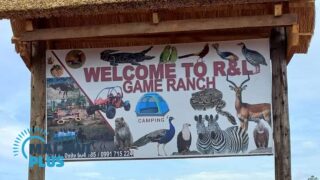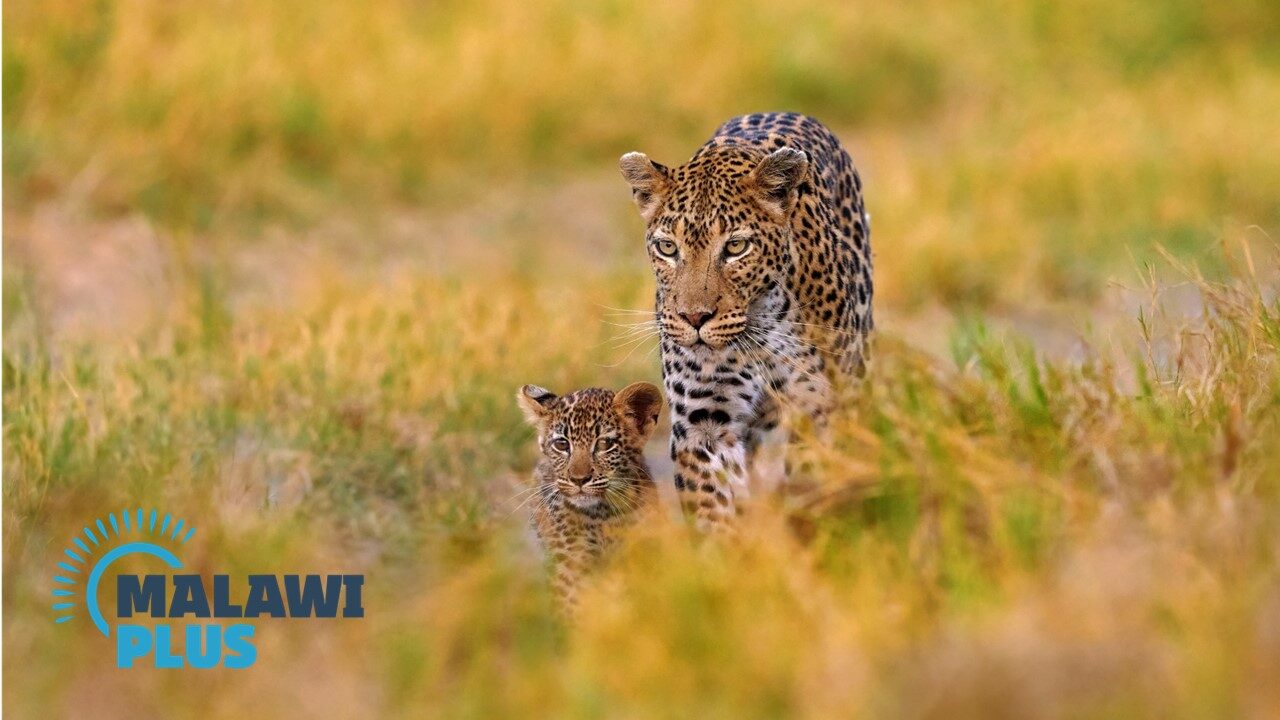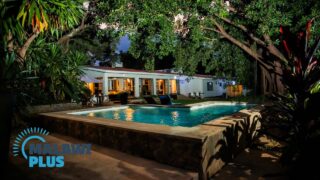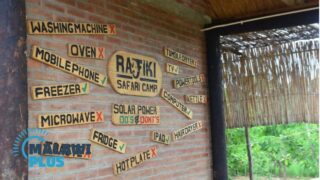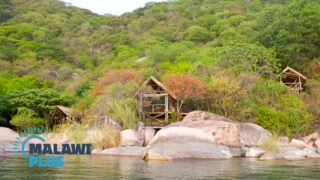15 Best Places to See Wildlife in Malawi
In recent years, Malawi has gained popularity among wildlife lovers as an upcoming destination.
With the excellent collaboration between the Department of National Parks and Wildlife (DNPW) and African Parks, some innovative ideas on wildlife management and a conservation program to stop poaching, the wildlife numbers have increased and Malawi has been transformed into an exciting safari destination where a wide variety of wildlife can now be observed, including the Big Five.
Malawi has five national parks and four wildlife reserves, each with unique features.
Away from the crowds and in unspoilt wilderness, you can explore by safari vehicle, walking, trekking or by boat for an unforgettable safari experience.
This is the result of nearly two decades of hard work by the DNPW and African Parks.
In 2003, the first project of the DNPW and African Parks was the Majete Wildlife Reserve in southern Malawi, where poaching was so rampant that elephants, rhinos, lions and buffaloes had all been hunted down and only a few antelope remained.
This empty state of Majete has since been transformed into a wildlife wonderland: rhinos were introduced in 2003, 70 elephants in 2006, 4 lions in 2012 and 13 giraffes in 2018, 5 cheetahs in 2019, and 14 African dogs and a variety of animals were reintroduced in 2021.
A total of nearly 5,000 animals have been reintroduced to date, making Majete Malawi’s greatest wildlife treasure trove and the only ‘Big Five’ reserve in Malawi.
Since the initial introduction of rhinos and elephants, not a single animal has been poached in the reserve. Majete Wildlife Reserve is a conservation success story in Malawi.
Following the success of Majete, African Parks took on the collaborative management of Liwonde National Park and Nkhotakota Wildlife Reserve in 2015.
In Liwonde, 7 cheetahs were introduced in 2017, 10 lions in 2018 and a further 17 black rhinos in 2019. This translocation of 17 black rhinos was one of the largest international black rhino translocations.
Currently, the cheetahs introduced in 2017 have doubled in number with the birth of some cubs.
Exciting times are also ahead for Nkhotakota: from July 2016 to August 2017, a total of more than 520 elephants and 2000 other animals including sable, waterbuck, kudu and impala were welcomed from Liwonde and Majete.
This was the largest elephant translocation in the history of nature conservation.
Poaching is now a thing of the past, thanks to well-trained and equipped ranger teams and strong community engagement.
National Parks
1. Nyika National Park (Rumphi, Malawi)
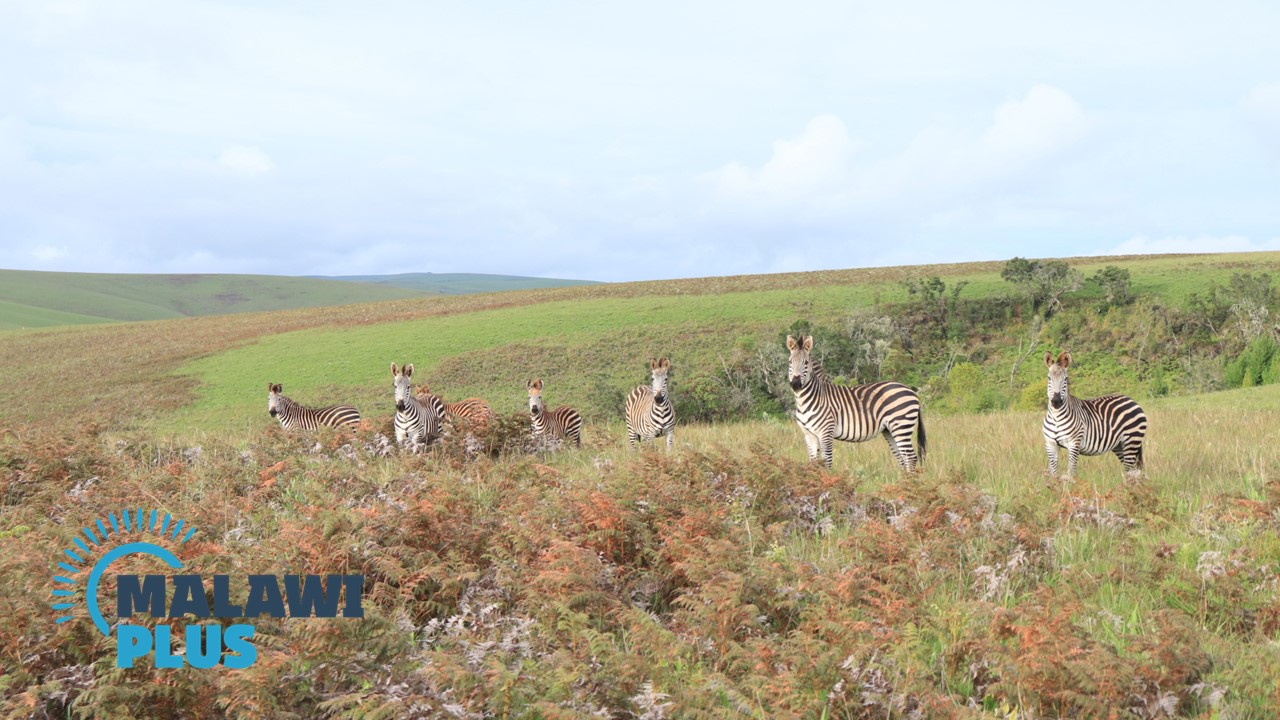 Located in northern Malawi, Nyika National Park covers an area of 3,200km2 and is the largest national park in Malawi.
Located in northern Malawi, Nyika National Park covers an area of 3,200km2 and is the largest national park in Malawi.
It is also Malawi’s oldest national park, having been established in 1965.
Almost the entire Nyika Plateau, which rises over 2,500m above sea level, is designated as a national park, and the landscape of rolling hills, grasslands and flowers is breathtakingly stunning, leaving visitors speechless.
The name Nyika means “Where the water comes from”, since the plateau is Malawi’s most important catchment area.
It is also home to the richest orchid population in south-central Africa, with more than 200 species in bloom during the rainy season.
Eleven of these species are endemic to Nyika, and a further 27 are found nowhere else in Malawi.
Nearly 100 species of mammal have been recorded in Nyika National Park, including large herds of antelope and the largest population of leopard in Central Africa.
You can also see eland, roan, zebra, buffalo and elephant. Moreover, night drives also offer the possibility of encountering hyenas and other small nocturnal predators.
Nyika is also one of Malawi’s leading birding destinations, with over 400 bird species and four species found in Nyika that have not been recorded elsewhere in Malawi (Yellow Mountain Warbler, Chirring Cisticola, Ayres Cisticola and Mountain Marsh Widow).
The best way to appreciate the majestic scenery of Nyika is by taking a three-day hike to Livingstonia.
Mountain bikes can also be hired at the lodge.
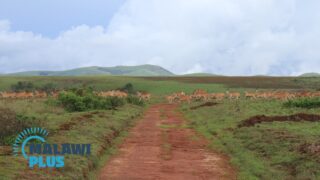
2. Liwonde National Park (Machinga, Malawi)
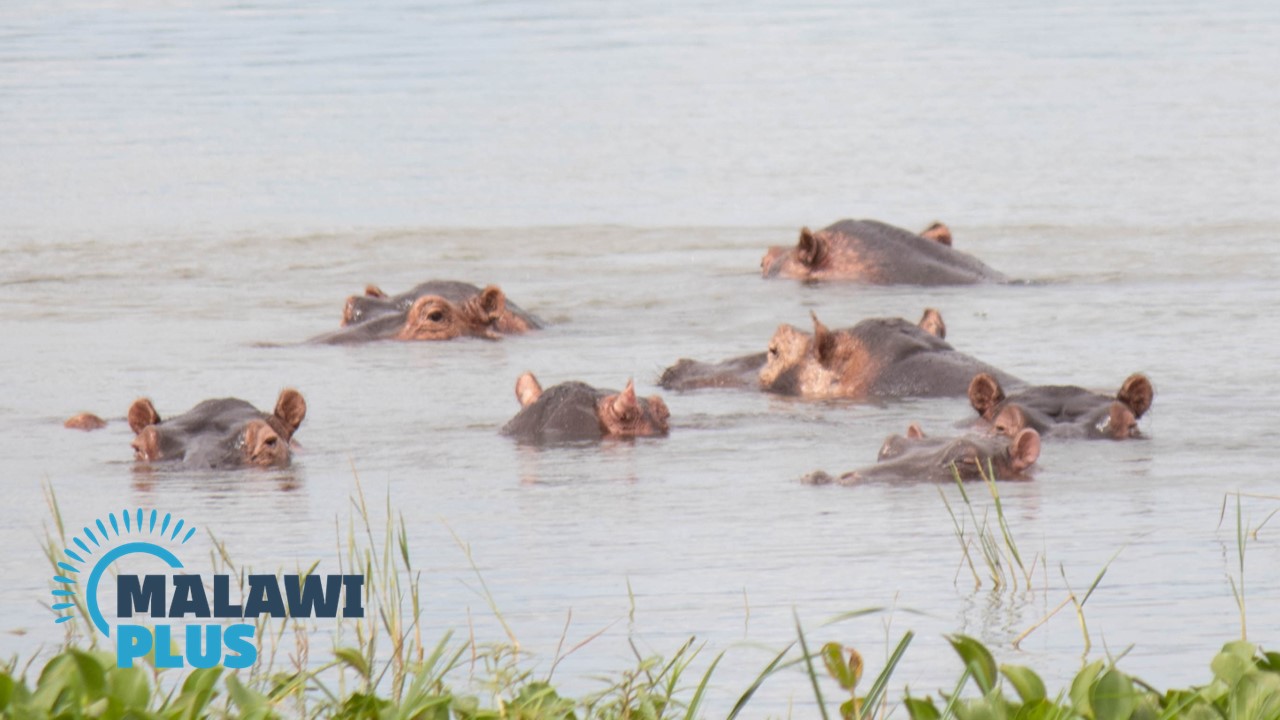 Liwonde National Park is located approximately 190km north of Blantyre and it covers an area of 548km².
Liwonde National Park is located approximately 190km north of Blantyre and it covers an area of 548km².
The combination of the Shire River which is the only outlet of Lake Malawi, and the rich mopane and grassland habitats provide a suitable environment for wildlife and birds, probably making Liwonde the most popular national park in Malawi.
Liwonde National Park has been managed by African Parks since 2015 which continues to transform Liwonde into a first-class safari destination.
Between July 2016 and August 2017, Liwonde contributed to the largest elephant translocation in history.
Out of a population of approximately 800 elephants, 336 elephants were relocated to the Nkhotakota Wildlife Reserve, contributing to the recovery of wildlife in the Nkhotakota Wildlife Reserve.
In 2017, seven cheetahs were reintroduced to Liwonde National Park for the first time in nearly 100 years.
Since then, the birth of eight cheetah cubs has been confirmed, more than doubling the number of cheetahs already in the park.
In 2018, 10 lions were also reintroduced from South Africa and Majete Wildlife Reserve.
In 2019, one of the largest ever international black rhino relocations took place, with 17 black rhinos relocated from South Africa to Liwonde.
Furthermore, in 2021, 14 African Wild Dogs were successfully relocated from South Africa and Mozambique to Liwonde National Park and Majete Wildlife Reserve.
This reintroduction is an international effort to protect the endangered African Wild Dog.
In addition, Liwonde National Park is home to an estimated 12,000 large mammals, including hippos, crocodiles, African buffalo, waterbuck, impala, common eland, sable antelope, bushbuck, kudu, hyena and warthog.
It is also one of Malawi’s leading birding spots and is home to around 400 bird species, including Pel’s Fishing Owl, African Skimmer, Brown-breasted Barbet, Lilian’s Lovebird and Bohm’s Bee-eater.
In addition to walking and driving safaris, Liwonde offers one of the best boat safari experiences in Africa.
It is also possible to hire a community guide at the main gate to show you around the park.
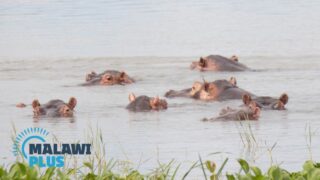
3. Lake Malawi National Park (Mangochi, Malawi)
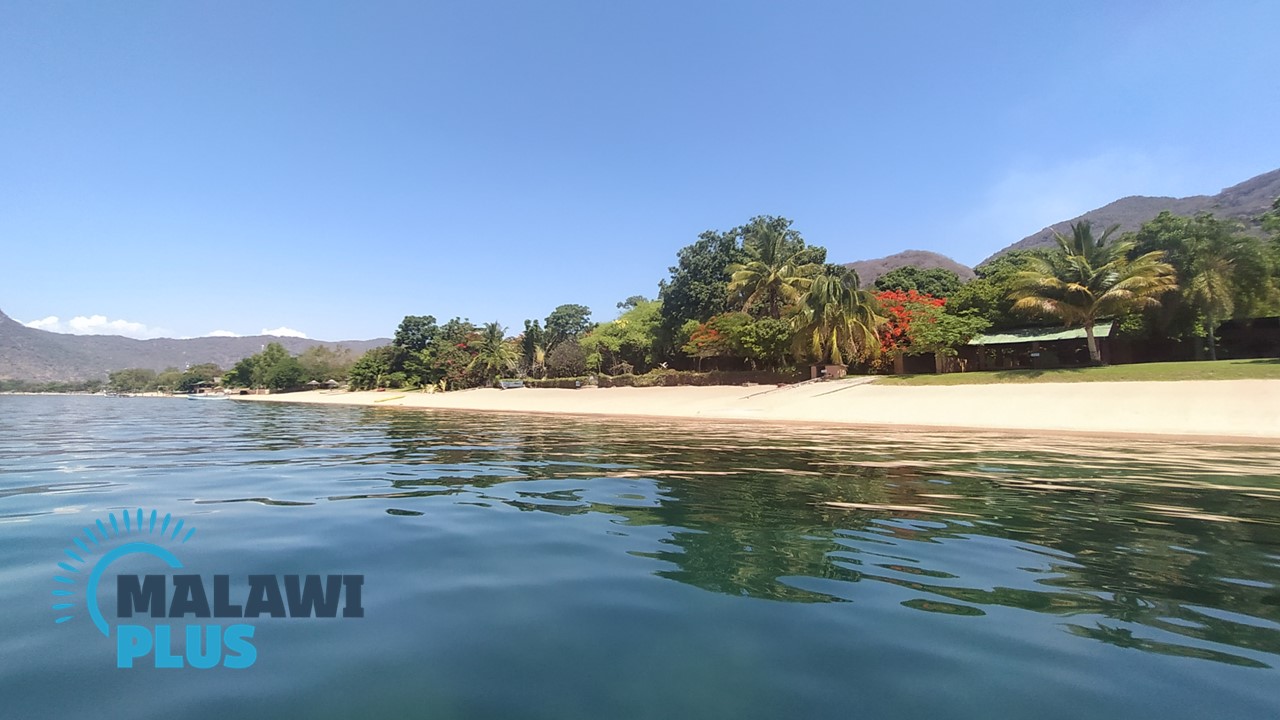 Lake Malawi is the third largest lake in Africa and the ninth largest in the world, with a maximum depth of 700m in the northern part of the lake, making it the third deepest lake in the world.
Lake Malawi is the third largest lake in Africa and the ninth largest in the world, with a maximum depth of 700m in the northern part of the lake, making it the third deepest lake in the world.
With its golden sandy beaches and glistening turquoise waters, Lake Malawi was dubbed “the Lake of Stars” by David Livingstone.
Located at the southern end of Lake Malawi, Lake Malawi National Park was the world’s first freshwater national park and was inscribed as a UNESCO World Heritage Site in 1984.
The park covers a total area of 94km² and comprises of the land around Cape Maclear Bay (87km²), the lake (7km²) and 13 islands up to 100m offshore.
The crystal-clear water is thought to be home to some 1,000 species of vibrant cichlid fish, creating a kaleidoscope of colours below the surface.
As a single lake, it is home to the largest variety of freshwater fish in the world, more than the number of freshwater fish species in Europe and North America combined.
Lake Malawi National Park is not only a picturesque wonder with a rich diversity of fish, but it is also one of the best places in the world to enjoy a variety of water sports.
Scuba diving, snorkelling, sailing, kayaking, parasailing, boat trips and any other water sport you can think of are available all year round.
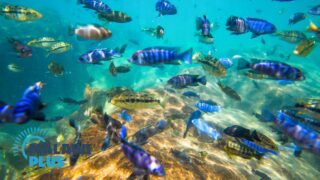
4. Lengwe National Park (Chikwawa, Malawi)
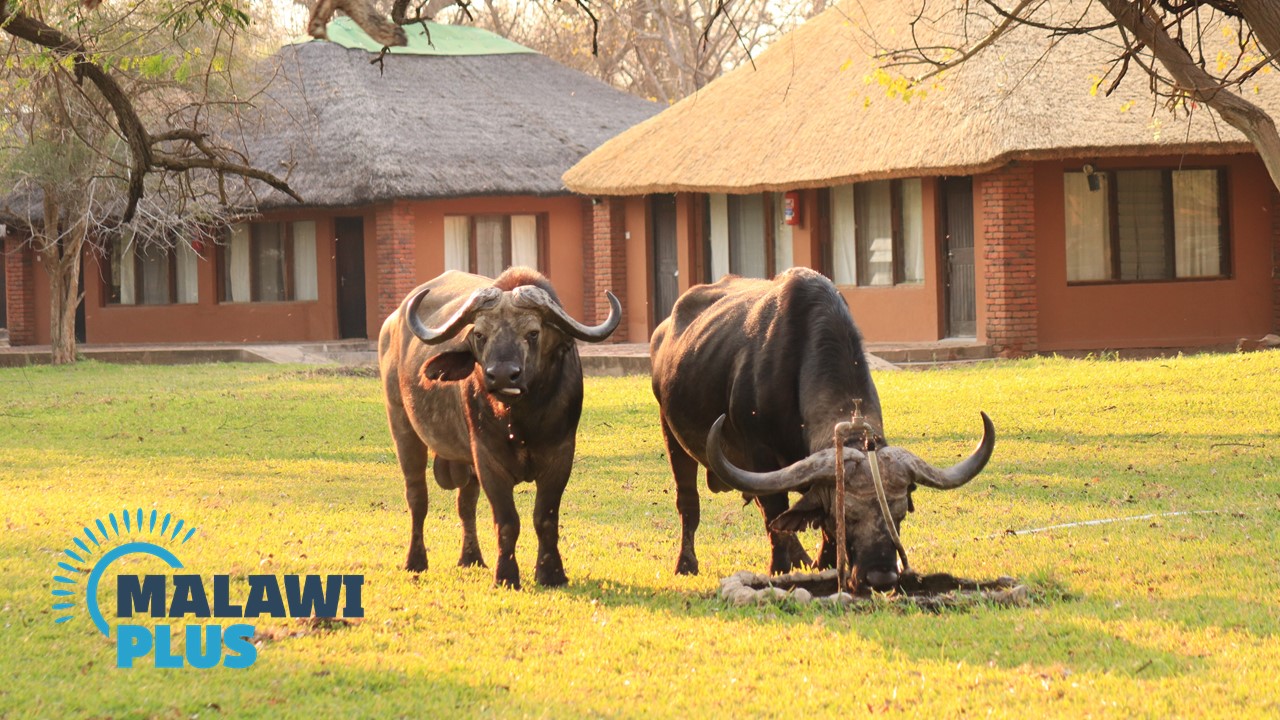 Lengwe National Park, 80 km south of Blantyre on the border with Mozambique, was first set aside as a game reserve in 1928 to protect the large mammals of the Lower Shire Valley, particularly the nyala antelope and their habitat.
Lengwe National Park, 80 km south of Blantyre on the border with Mozambique, was first set aside as a game reserve in 1928 to protect the large mammals of the Lower Shire Valley, particularly the nyala antelope and their habitat.
It was subsequently designated a national park in 1970 and expanded to its current size of 887 km² in 1975.
The park is managed by the Department of National Parks and Wildlife (DNPW).
Lengwe National Park may seem a bit underwhelming after spending a day or two in Majete Wildlife Reserve.
This is because the wildlife found in the park has not been boosted by reintroduction schemes and is all in its natural habitat.
Lengwe National Park was originally Malawi’s most northerly nyala habitat.
Annual game counts conducted by the Wildlife and Environment Society of Malawi have shown a steady increase in the population of the main antelope species in the park, especially the rare nyala.
The park is also home to between 2,000 and 3,000 beautiful antelope and kudu.
On game drives, it is easy to spot Livingstone suni, bushbuck, impala, aardvark, yellow baboon, blue monkey, warthog, bush pig, velvet monkey and buffalo.
Lengwe is fairly dry outside the rainy season and the only stable source of water is rain.
This means that animals take advantage of the few puddles that are constantly supplied with water, and the dry season is ideal for game watching as many animals come to the water holes.
The Park is also home to a variety of bird species, with over 350 species recorded, including the colourful endemic Bohm’s Bee-eater, Crested Guineafowl, Vanga Flycatcher and Yellow-billed Hornbill.
Lengwe National Park is an ideal day trip from Blantyre.
The park’s restaurant offers a great place to eat while taking in the wildlife and scenery.
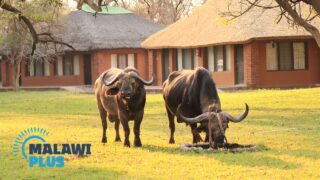
5. Kasungu National Park (Kasungu, Malawi)
 Located west of Kasungu town, along the border with Zambia, Kasungu National Park is the closest national park to Lilongwe and was declared a national park in 1970.
Located west of Kasungu town, along the border with Zambia, Kasungu National Park is the closest national park to Lilongwe and was declared a national park in 1970.
With an area of 2,316 km², it is Malawi’s second largest national park after Nyika National Park. The park was once a favourite destination of the first President of Malawi, Dr. Hastings Kamuzu Banda.
Kasungu National Park consists of miombo woodlands, grasslands and rolling hills, with a small lake and a wide marshy river.
The Dwanga and Lingadzi rivers are the main sources of water for the ecosystem, especially during the hot dry season from September to November, when water levels drop and animals are forced to move closer to the remaining water bodies in the park.
Kasungu National Park also contains several prehistoric sites, including iron-smelling kiln, rock paintings and the remains of a fortified village.
Climb the hill known as Black Rock for breathtaking views of the entire park with endless vistas.
Although the animal density is not as high as in Nyika, but elephants, various antelopes and small herds of buffalo and zebra can be seen.
Predators such as leopards, hyenas, servals and jackals are also present, but are not seen often.
There is also a significant number of hippos in the Lifupa Dam.
Just like in other parts of Malawi, bird watching is also prevalent at Kasungu National Park, with the ideal time to go being from June to September.
Kasungu National Park has a lodge and game drives and guided walks are also available, but you may easily drive about without a guide if you have a decent map.
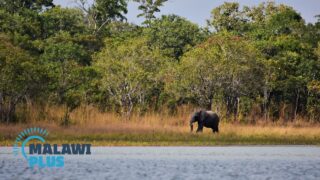
Wildlife Reserves
6. Majete Wildlife Reserve (Chikwawa, Malawi)
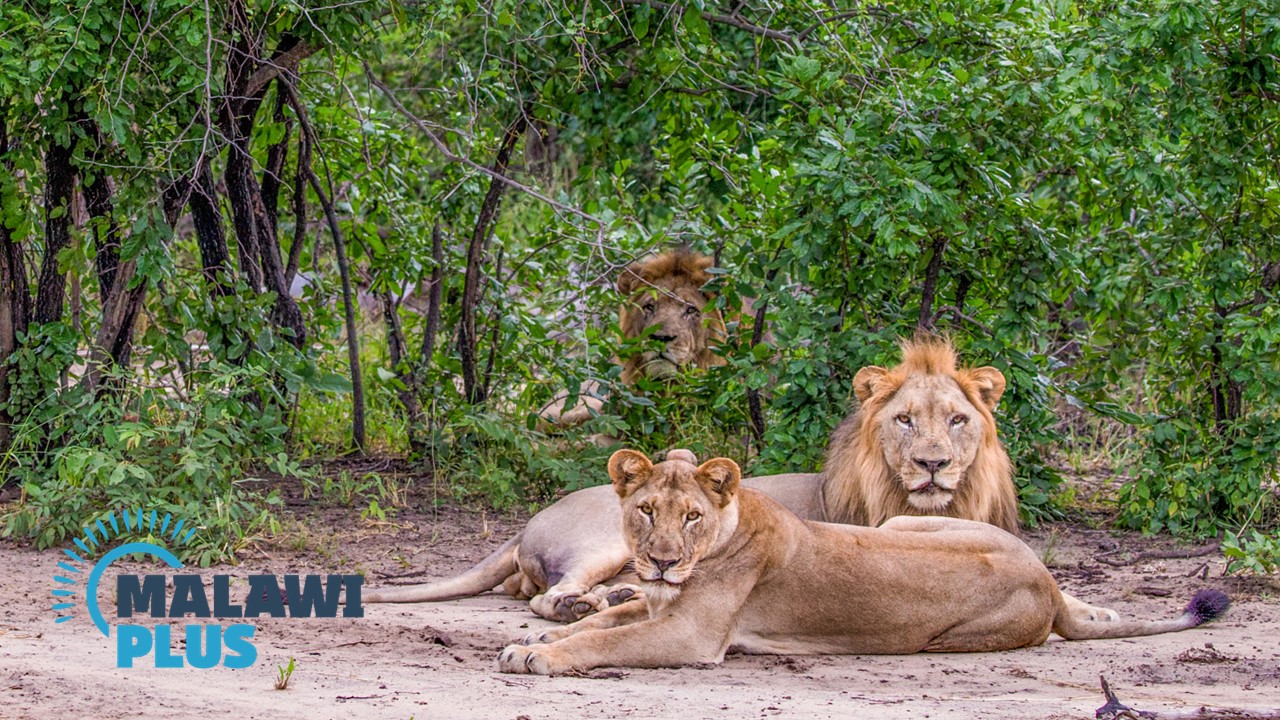
Majete Wildlife Reserve which was established in 1955 is located in southern Malawi, just south of Blantyre.
The reserve is the only park in Malawi where the ‘Big Five’ can be seen, and game drives and guided tours are available.
The story of Majete Wildlife Reserve is perhaps the most intriguing of all the parks in Malawi.
Until 2003, when the Malawi Government’s Department of National Parks and Wildlife (DNPW) and African Parks initiated a project to rehabilitate the Majete Wildlife Reserve, the law was not adequate enough to deal with poaching so elephant, rhino, lion and buffalo had all been hunted out, leaving less wildlife and only a few remaining antelopes.
This empty Majete was transformed into a wildlife wonderland: a mass translocation of wildlife began in 2003 and by March 2012, 2,559 animals of 14 species had been reintroduced, including the Big Five: leopard, elephant, buffalo, black rhino and lion.
By 2017, elephants had bred to more than 430, and during the historic translocation of 520 elephants to the Nkhotakota Wildlife Reserve, 200 elephants were also translocated from Majete, contributing to the repopulation of the reserve.
In 2018, 4 new lions, 2 males and 2 females, were reintroduced from South Africa to increase the genetic diversity of the population, and 5 cheetahs were introduced in 2019.
In July 2021, 14 African wild dogs were relocated from South Africa and Mozambique to Liwonde National Park and Majete Wildlife Reserve.
This was a historic project to protect the African Wild Dog, of which it is estimated that only 6,600 animals and 700 breeding pairs remain on the continent.
A total of nearly 5,000 wildlife have been reintroduced since then, but not a single animal has been poached in the reserve since 2003.
Majete Wildlife Reserve is a conservation success story in Malawi.
Located 1.5 hours’ drive from Blantyre, the reserve is ideal for a day visit.
Get away from the hustle and bustle of the city and go exploring at Majete Wildlife Reserve, the only place in Malawi where the Big Five are all in one place.
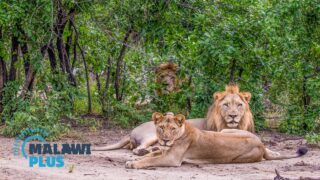
7. Nkhotakota Wildlife Reserve (Nkhotakota, Malawi)
 Located in central Malawi, the 1,802 km² Nkhotakota Wildlife Reserve is Malawi’s largest and oldest reserve, having been established in 1954.
Located in central Malawi, the 1,802 km² Nkhotakota Wildlife Reserve is Malawi’s largest and oldest reserve, having been established in 1954.
Nkhotakota Wildlife Reserve has been managed by African Parks in collaboration with Malawi’s Department of National Parks and Wildlife (DNPW) since 2015 and its exciting future is very much in the spotlight.
The rugged terrain ranges from an altitude of 500m in the east to 1,63 m at the summit of Chipata Mountain, and the plateau is dotted with streams and waterfalls, making it a great spot for fishing, canoeing and river rafting.
Due to years of poaching and lawlessness, the Nkhotakota Wildlife Reserve was home to more than 1,500 elephants in the 1990s, but by 2015 the population had dwindled to less than 100.
However, between July 2016 and August 2017, African Parks successfully relocated a total of 520 elephants and 2000 animals, including sable, waterbuck, kudu and impala, from Liwonde National Park and Majete Wildlife Reserve to Nkhotakota Wildlife Reserve.
This was one of the largest relocations of elephants ever recorded in the history of the world.
The elephants’ return to the park has established it as an important ecotourism attraction.
The park also offers a wide range of activities, including fishing, canoeing and rafting.
The Bua River, which flows through the reserve, is home to lake salmon and offers exciting catch-and-release fishing.
On boat trips, you may see countless elephants bathing on the riverbanks.
Or on walking safaris, explore the pristine African wilderness with an armed guide, pursuing animal tracks and observing the many species of plants.
Alternatively, climb Chipata Mountain, the highest peak, and you will be rewarded with spectacular views of Nkhotakota across the horizon.

8. Vwaza Marsh Wildlife Reserve (Rumphi, Malawi)
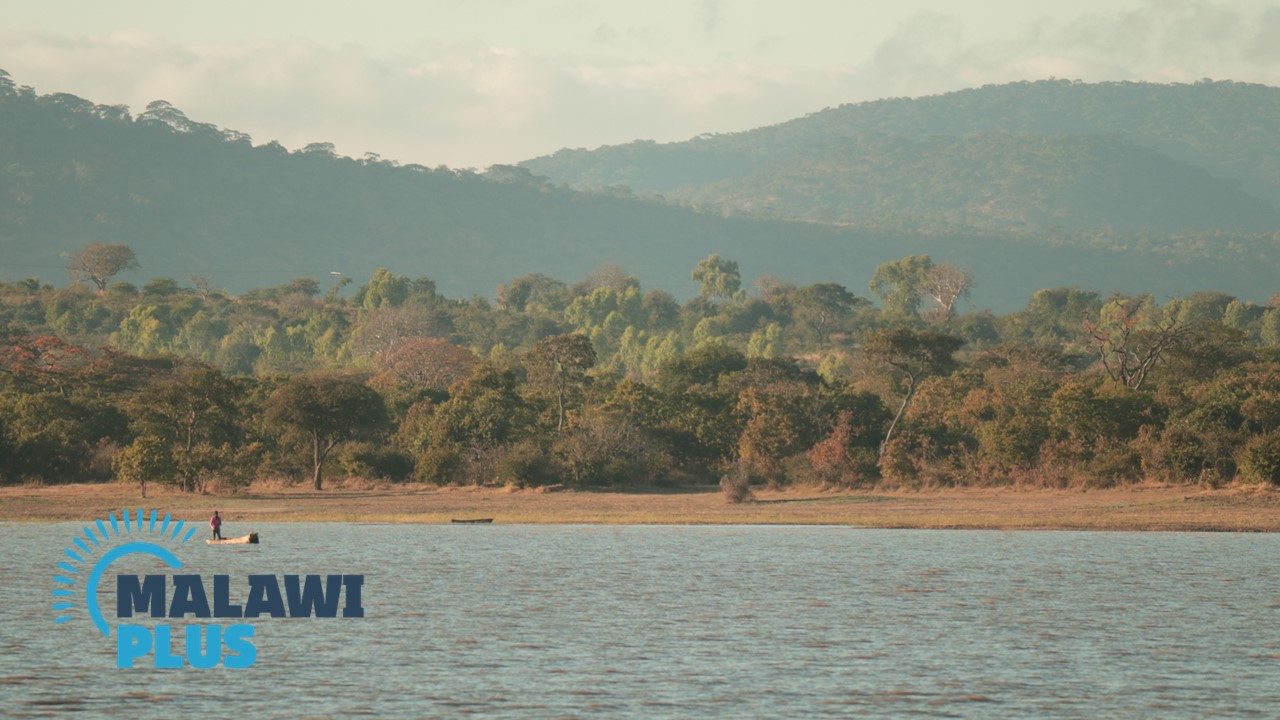 Located north-west of Mzuzu, on the border with Zambia, Vwaza Marsh Wildlife Reserve is a 978km² reserve which was designated in 1977.
Located north-west of Mzuzu, on the border with Zambia, Vwaza Marsh Wildlife Reserve is a 978km² reserve which was designated in 1977.
In the 19th and early 20th centuries, Vwaza Marsh was one of the most famous places of ivory collection.
Today, it is one of the best places in Malawi to see elephants and buffaloes.
If you visit Nyika National Park by car, be sure to stop off at Vwaza Marsh Wildlife Reserve at the foot of Nyika Plateau.
Both Nyika and Vwaza offer the ultimate safari experience in Malawi.
Vwaza Marsh Wildlife Reserve comprises of forests, grasslands and marshy plains, with several streams flowing into Lake Kazuni near the main entrance to the reserve.
Lake Kazuni is a small lake by Malawian standards, but very attractive for wildlife: it is home to more than 500 hippos and on most days hippos can be seen poking their heads out of the water.
Crocodiles can often be seen basking on the lake’s sandy beaches.
It is estimated that there are more than 1,000 buffalo in the vicinity, but their roaming habits mean that sightings are not easy to predict.
Hundreds of elephants inhabit the area and it is not uncommon to see herds of 30-40.
There are few predators, but lions, leopards and wild dogs have been spotted in the past.
A variety of other antelopes are also present, including the roan, greater kudu, Lichtenstein’s hartebeest, eland and impala.
With around 300 bird species, bird watching is also popular in the park.
It is one of the best places in Malawi to view waders such as stork, heron and white-faced tree duck.
Wildlife viewing is best done on foot around Lake Kazuni or on wilderness trails.
You can either drive around the reserve in your own vehicle or arrange for a guide at the entrance to the reserve.

9. Mwabvi Wildlife Reserve (Nsanje, Malawi)
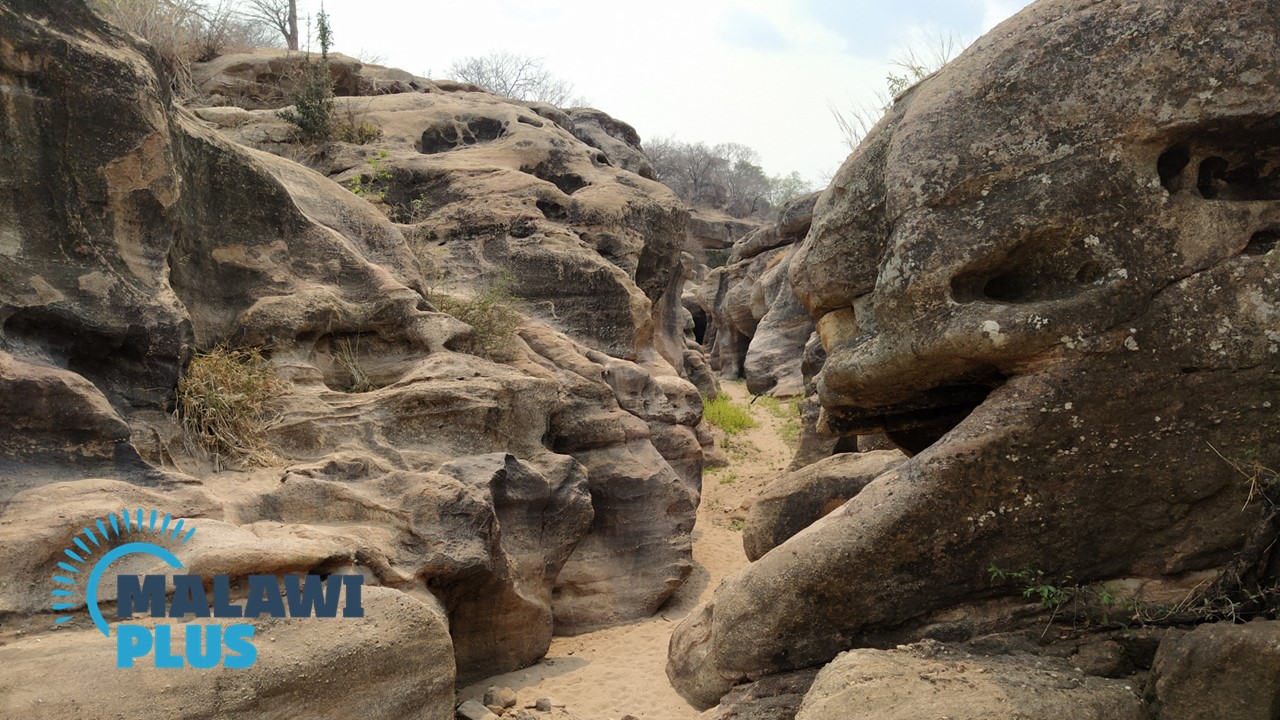 Located in Malawi’s southernmost district of Nsanje, Mwabvi Wildlife Reserve is on the border with Mozambique and is the country’s smallest wildlife reserve, covering 135 km².
Located in Malawi’s southernmost district of Nsanje, Mwabvi Wildlife Reserve is on the border with Mozambique and is the country’s smallest wildlife reserve, covering 135 km².
Although it is not far from Lengwe National Park and Majete Wildlife Reserve, it is considered the most inaccessible reserve in Malawi.
There is a wide range of vegetation, from grasslands to forests, with some fairly deep forests.
The magnificent sandstone outcrops with 360-degree views of the Shire and Zambezi rivers and the Mopane woodlands create a lunar landscape that is attractive all year round.
Guided walks by game rangers are recommended for keen walkers.
The pristine wilderness still maintains a decent number of wildlife including buffalo which can be observed bathing in the Mwabvi River.
The area is also home to many species of antelope, including kudu, sable, impala, nyala, and leopard and hyena have also been spotted.
The best time for game watching is during the cooler months of June-August, because the altitude is low and summers can get quite hot and humid.
Poor road conditions can limit access, so a 4×4 vehicle is recommended, especially during the rainy season.
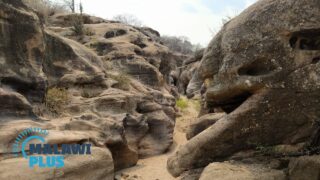
Other Places
10. Kuti Wildlife Reserve (Salima, Malawi)
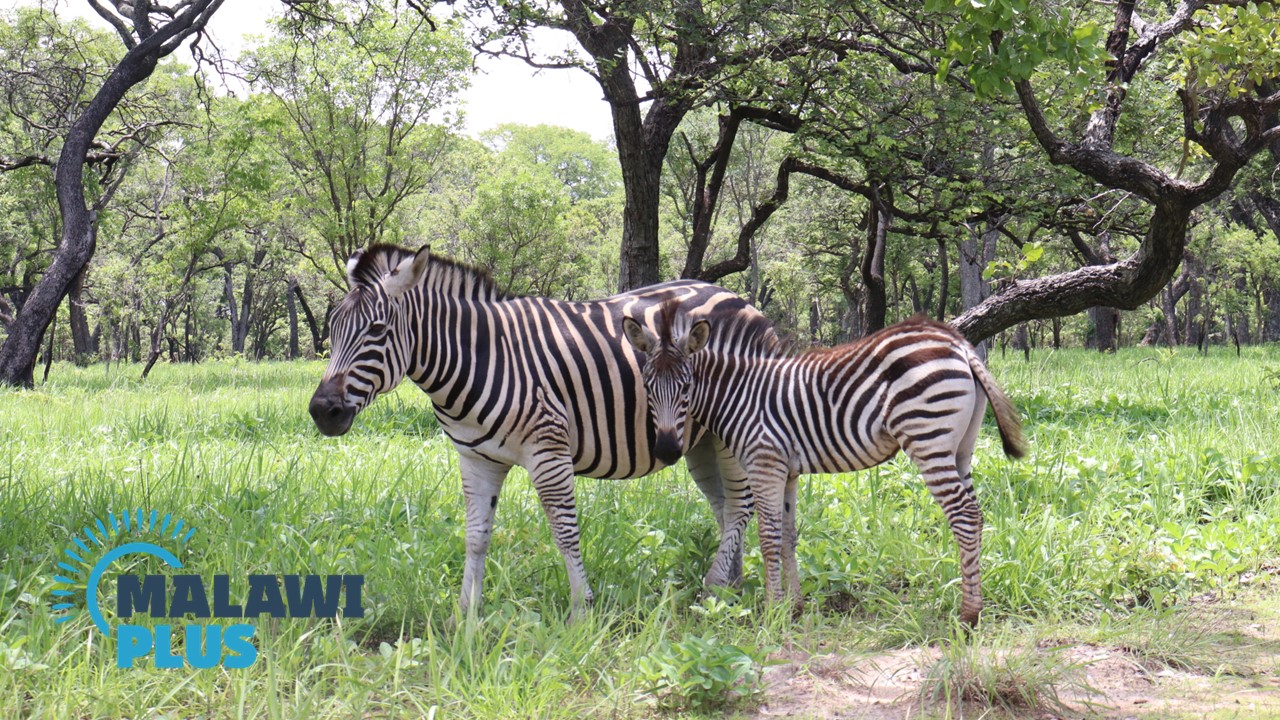
Kuti Wildlife Reserve is a community-owned wildlife reserve situated in Salima.
The reserve covers 2,000 hectares, and less than 1.5 hours from Lilongwe and 30 minutes from Senga Bay.
The revenue raised is used for projects such as tree planting, rehabilitation of boreholes, and clinics and seedling production to help the surrounding villages.
The reserve is also the primary destination for rehabilitated animals from the Lilongwe Wildlife Centre that are ready for release into the wild.
Kuti was established in the 1990s after having been decommissioned as a government cattle ranch, and set as a wildlife reserve in 2005.
It has a diverse habitat ranging from brachystegia and miombo woodland through to grasslands, wetlands, and marshes.
Kuti Wildlife Reserve is home to a huge variety of free-roaming wildlife.
There are about 10 Reedbuck, 13 Eland, 15 Oribi, 15 Wildebeest, 20 Bush pig, 20 Warthog, 20 Kudu, 20 Nyala, 35 Duiker, 40 Impala, 50 waterbuck, 60 Baboons, 80 Vervet monkeys, 80 Bushbuck, 90 Zebra, over 120 Sable antelopes and one rescued Giraffe at Kuti.
There are no large predators and elephants in Kuti, so you can explore and take in your surroundings at your own pace on foot or by bike, without the need for a vehicle or scout.
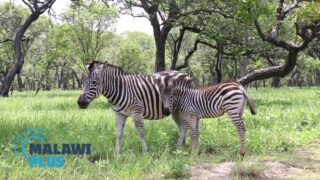
11. Game Haven (Thyolo, Malawi)
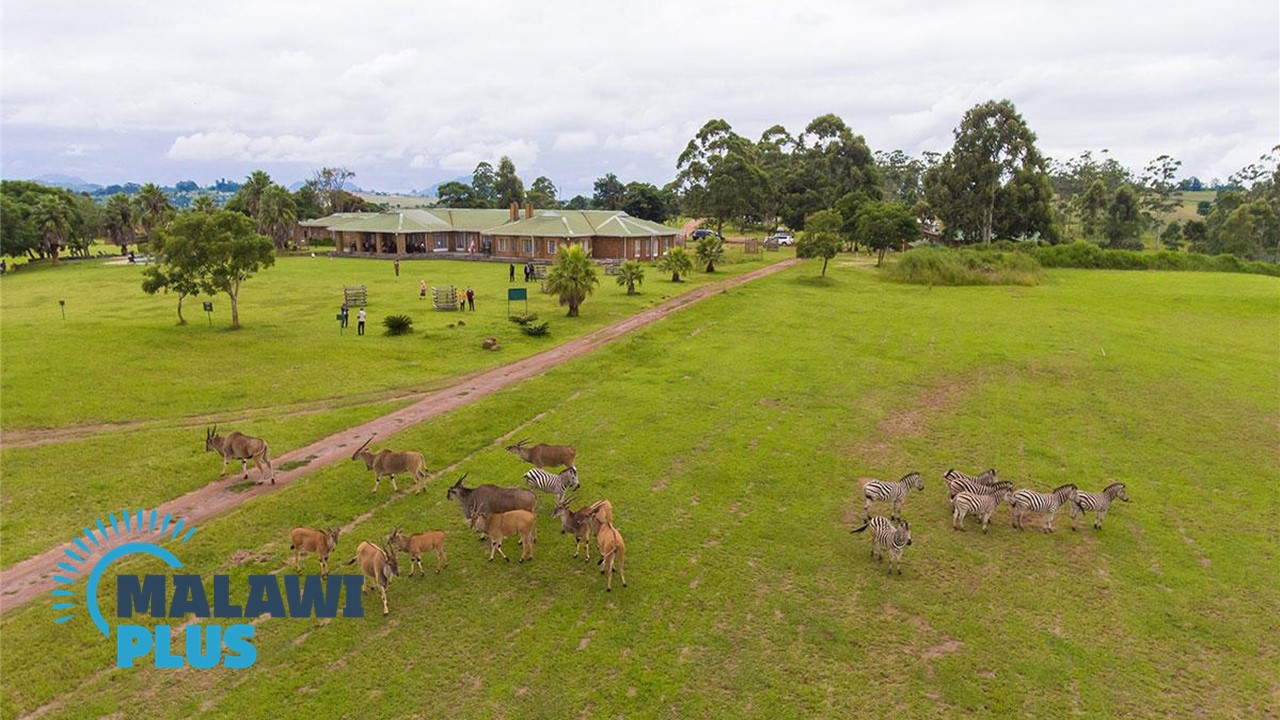
Located in southern Malawi, 25km from Blantyre, Game Haven Lodge is a unique retreat that combines tourism and wildlife conservation in the private Chimwenya Game Park.
The Game Park covers a total area of 520 acres and is home to 10 animal species including giraffe, eland, zebra, waterbuck, duiker, blue wildebeest sable, nyala, impala and jackal.
Experience playing golf on a beautifully manicured nine-hole course where wildlife roam freely.
A range of exciting activities are offered free of charge to guests, including game drives, guided game walks, mountain biking, bird watching, children’s playground, fishing and an 18-metre pool.
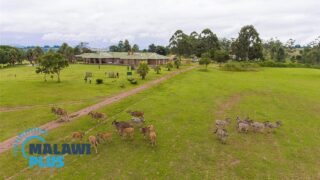
12. Lilongwe Wildlife Centre (Lilongwe, Malawi)
 Lilongwe Wildlife Centre is an award winning rescue, conservation and education hub run by Lilongwe Wildlife Trust (LWT), a private NGO.
Lilongwe Wildlife Centre is an award winning rescue, conservation and education hub run by Lilongwe Wildlife Trust (LWT), a private NGO.
It is Malawi’s only sanctuary for orphaned, injured and rescued wild animals.
The Wildlife Centre cares for over 200 animals including African Rock Python, Duiker, Olive Baboon, Serval Cat, Blue Monkey, Vervet Monkey, Crocodile, Owl and numerous other species that have been rescued in Malawi and elsewhere.
The centre has also nurtured and overseen the release of several troops of vervet monkeys in Kasungu National Park and three bush babies to Lake Malawi national Park.
Day visitors can take a 1 hour guided tour of the centres, leaving every hour between 9am to 4pm, spotting the animals and learning about the charity’s work, or walking the 4km of nature trails that wind along the river through the reserve which is home to antelopes, crocodiles and over 150 species of bird.
There’s also a bar, restaurant, playground and gift shop.
Large groups (8+) can pre-book a conservation session with the education team too.
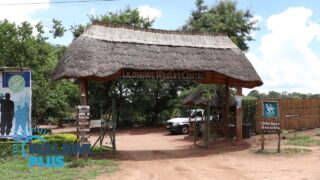
13. Thuma Forest Reserve (Salima, Malawi)
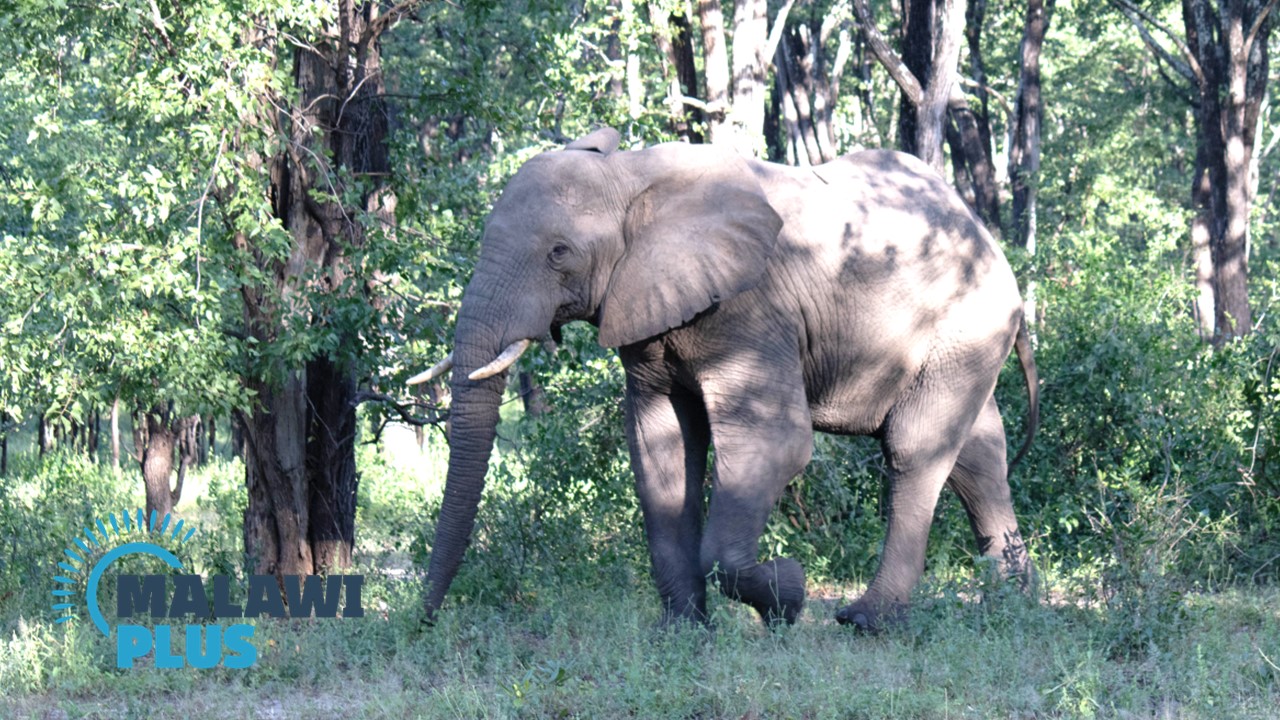 Declared a forest reserve in 1926, Thuma Forest Reserve covers an area of 197km² on the steep slopes of the Great Rift Valley near Lake Malawi, about 80km from Lilongwe.
Declared a forest reserve in 1926, Thuma Forest Reserve covers an area of 197km² on the steep slopes of the Great Rift Valley near Lake Malawi, about 80km from Lilongwe.
Thuma is one of the few forest reserves in Malawi that is home to a wide variety of wildlife, including elephant and antelope.
The altitude of Thuma Forest Reserve varies from 575m above sea level to 1564m on Thuma Mountain.
It is characterized by low-elevation mixed forest areas with miombo forest cover in the upper levels and bamboo patches in the lower levels.
An NGO known as Wildlife Action Group (WAG) has been working with local communities since 1996 on anti-poaching and conservation activities in collaboration with the Ministry of Forestry to protect the flora and fauna of Thuma Forest Reserve and restore the ecological balance.
In the past, Thuma was threatened by deforestation due to illegal logging of firewood, charcoal and timber which caused severe degradation of wildlife habitats.
As a result of WAG’s excellent work, poaching in the Thuma Forest Reserve has been greatly reduced and wildlife numbers have increased.
Elephants that had left Thuma due to heavy poaching have returned, and buffaloes that used to be in small groups of three or four now form herds of 30.
Other species you can see at Thuma Forest Reserve include greater kudu, bushbuck, Sharpe’s grysbok, common duiker, klipspringer, baboon, velvet monkey, bushbaby, leopard, spotted hyena, genet, African civet, honey badger, warthog, bush pig, porcupine and more.
Today, Thuma Forest Reserve is regaining its beauty and is one of Malawi’s best protected forest reserves.

14. Nyala Park (Chikwawa, Malawi)
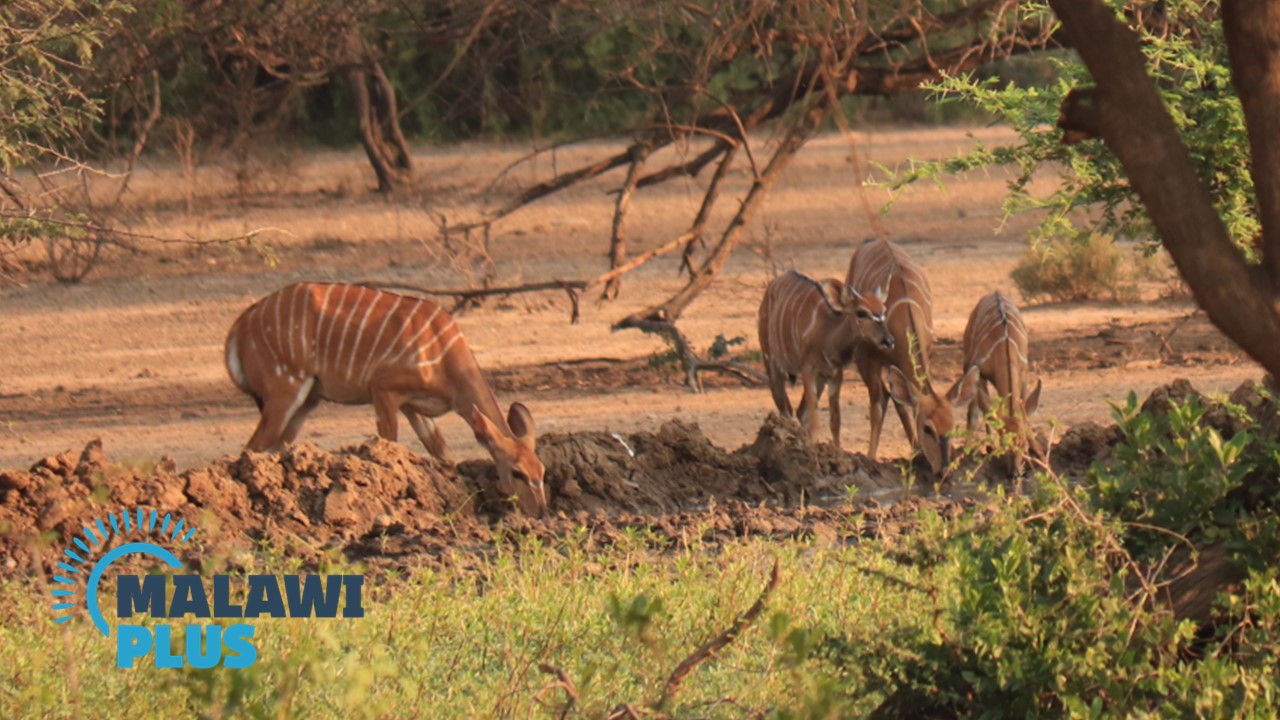 When SUCOMA (now Illovo Sugar Limited) became aware of the fact that the number of nyala was declining dramatically in Lengwe National Park, they secured the primary forest within the Nchalo Sugar Estate owned by Illovo Sugar Limited and brought a small breeding group of nyala from Lengwe to the site.
When SUCOMA (now Illovo Sugar Limited) became aware of the fact that the number of nyala was declining dramatically in Lengwe National Park, they secured the primary forest within the Nchalo Sugar Estate owned by Illovo Sugar Limited and brought a small breeding group of nyala from Lengwe to the site.
Nyala bred and wildlife such as wildebeest, oribi, impala and giraffe were introduced.
The height of the nyala, which appears curiously low under the tall canopy of the fever-tree, is one of the most remarkable scenic pleasures of Nyala Park.
Nyala Park is open to the public and an entrance fee is required. It is close to Lengwe National Park and should be visited in combination with it.
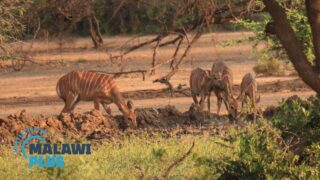
15. R and L Game Ranch (Lilongwe, Malawi)
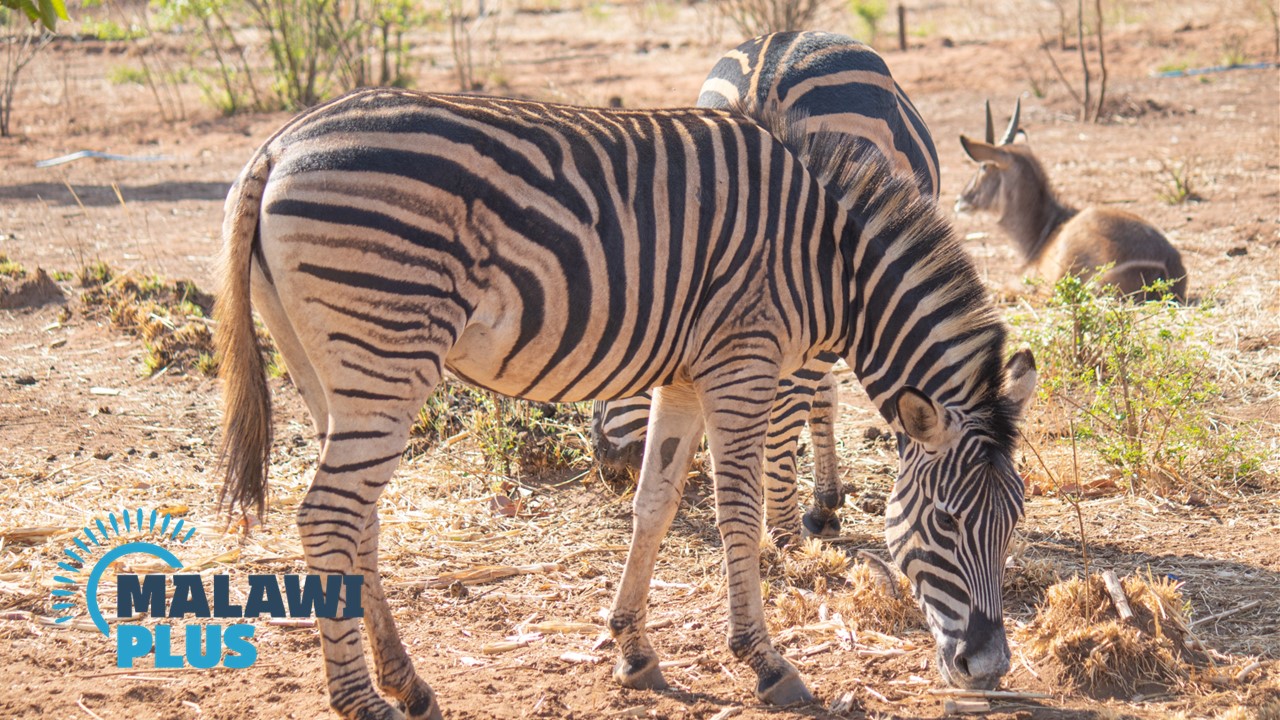 R and L Game Ranch is a charming farm and game ranch which is located on the outskirts of Lilongwe along Bunda road at Cheseka, about 8km from Bunda roundabout, on your left there is a big sign post of R & L farms.
R and L Game Ranch is a charming farm and game ranch which is located on the outskirts of Lilongwe along Bunda road at Cheseka, about 8km from Bunda roundabout, on your left there is a big sign post of R & L farms.
Take the turn there is a big sign posts its about 2km from the main road.
The farm was opened in 2021 and boasts of a wide variety of exotic and hybrid animals and birds.
At the farm, you also will be enchanted by the brilliant views of Bunda mountain.
The friendly guides are available to take you around the farm while explaining the various species of animals found there.
Some of the animals you will see along this tour are zebras, emus, ostriches, vulture, mongoose, turtles, sable antelopes, guinea fowls, peacocks, rabbits, Japanese bantam, English geese, Francolin spur fowl, parrots, porcupine and more.
